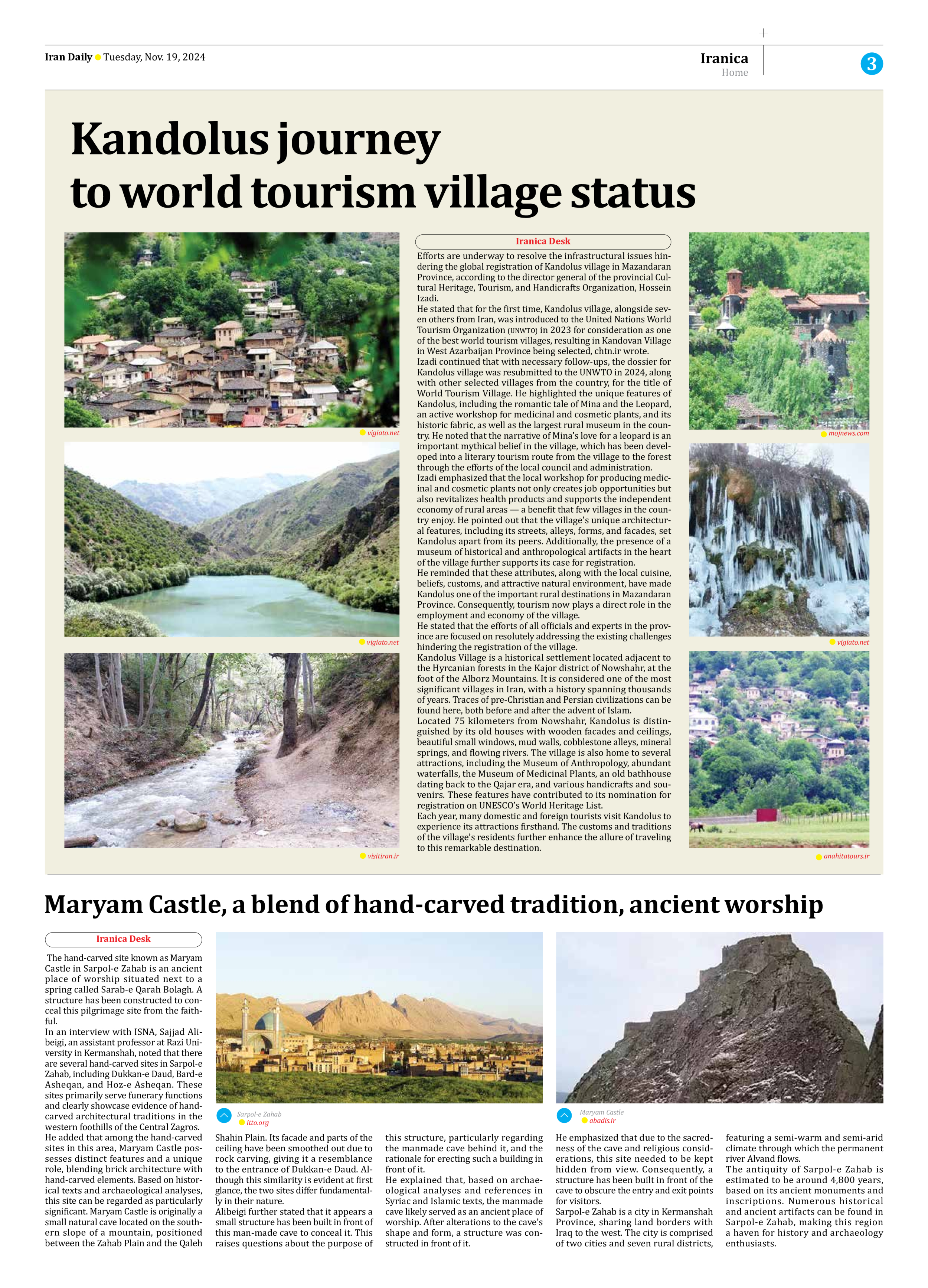
Copy in clipboard...
Kandolus journey to world tourism village status
He stated that for the first time, Kandolus village, alongside seven others from Iran, was introduced to the United Nations World Tourism Organization (UNWTO) in 2023 for consideration as one of the best world tourism villages, resulting in Kandovan Village in West Azarbaijan Province being selected, chtn.ir wrote.
Izadi continued that with necessary follow-ups, the dossier for Kandolus village was resubmitted to the UNWTO in 2024, along with other selected villages from the country, for the title of World Tourism Village. He highlighted the unique features of Kandolus, including the romantic tale of Mina and the Leopard, an active workshop for medicinal and cosmetic plants, and its historic fabric, as well as the largest rural museum in the country. He noted that the narrative of Mina’s love for a leopard is an important mythical belief in the village, which has been developed into a literary tourism route from the village to the forest through the efforts of the local council and administration.
Izadi emphasized that the local workshop for producing medicinal and cosmetic plants not only creates job opportunities but also revitalizes health products and supports the independent economy of rural areas — a benefit that few villages in the country enjoy. He pointed out that the village’s unique architectural features, including its streets, alleys, forms, and facades, set Kandolus apart from its peers. Additionally, the presence of a museum of historical and anthropological artifacts in the heart of the village further supports its case for registration.
He reminded that these attributes, along with the local cuisine, beliefs, customs, and attractive natural environment, have made Kandolus one of the important rural destinations in Mazandaran Province. Consequently, tourism now plays a direct role in the employment and economy of the village.
He stated that the efforts of all officials and experts in the province are focused on resolutely addressing the existing challenges hindering the registration of the village.
Kandolus Village is a historical settlement located adjacent to the Hyrcanian forests in the Kajor district of Nowshahr, at the foot of the Alborz Mountains. It is considered one of the most significant villages in Iran, with a history spanning thousands of years. Traces of pre-Christian and Persian civilizations can be found here, both before and after the advent of Islam.
Located 75 kilometers from Nowshahr, Kandolus is distinguished by its old houses with wooden facades and ceilings, beautiful small windows, mud walls, cobblestone alleys, mineral springs, and flowing rivers. The village is also home to several attractions, including the Museum of Anthropology, abundant waterfalls, the Museum of Medicinal Plants, an old bathhouse dating back to the Qajar era, and various handicrafts and souvenirs. These features have contributed to its nomination for registration on UNESCO’s World Heritage List.
Each year, many domestic and foreign tourists visit Kandolus to experience its attractions firsthand. The customs and traditions of the village’s residents further enhance the allure of traveling to this remarkable destination.







